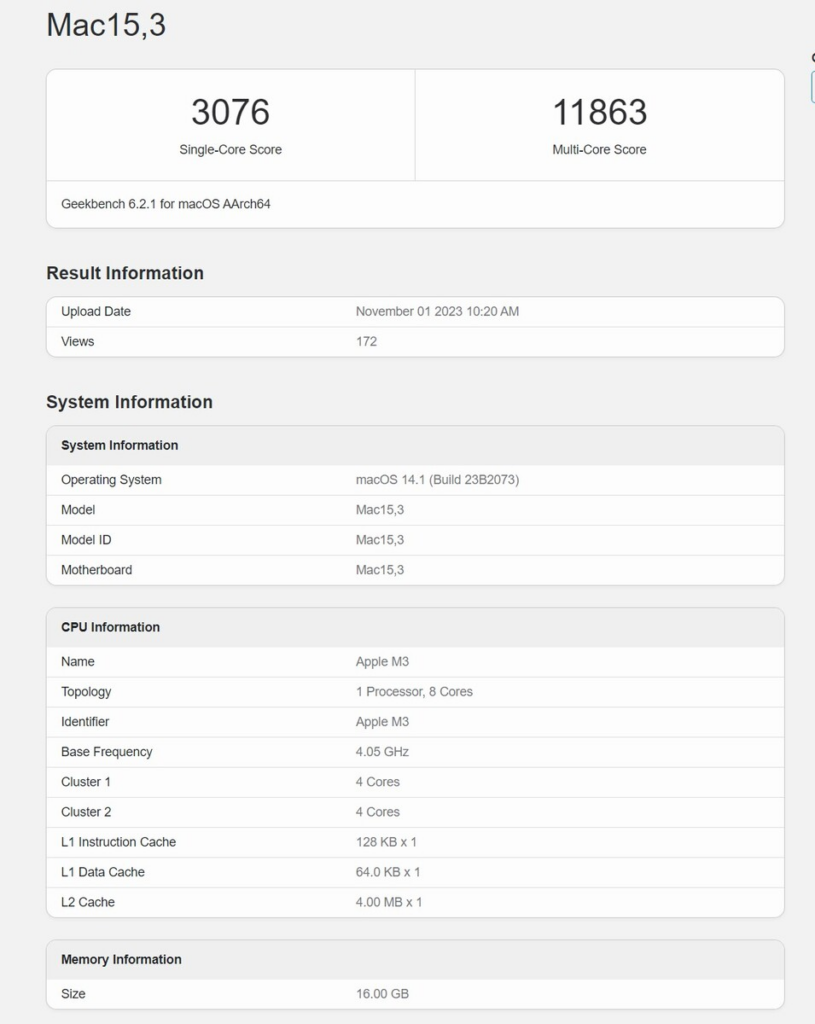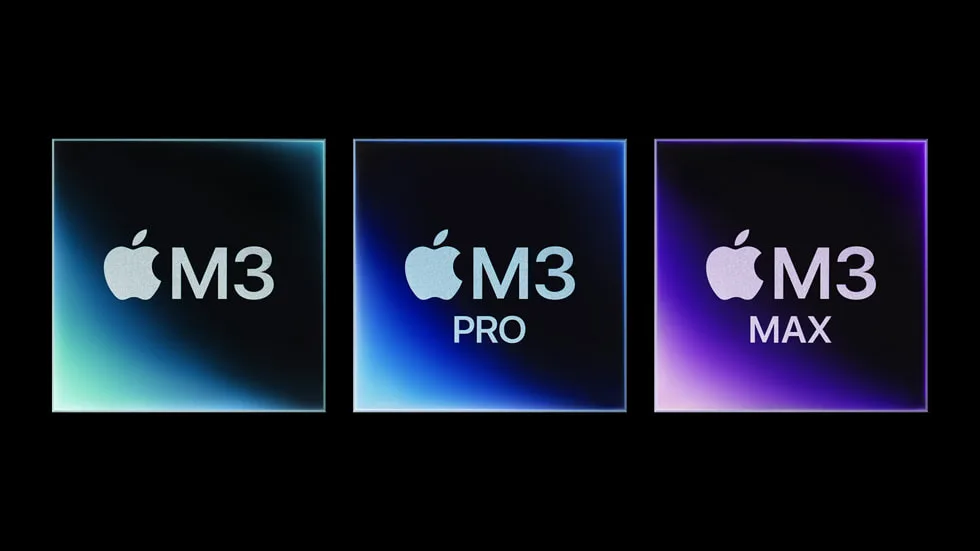Apple unveiled the new M3 SoC family last week, and it looks like we already have some early performance benchmarks for the base M3 chip. Last week we also saw the release of Qualcomm Snapdragon X Elite, an Arm-based processor for Windows.
Apple M3 and Snapdragon X Elite
| Specs | Snapdragon X Elite | Apple M3 |
| CPU cores | 12 | 8 |
| CPU architecture | Armv9 | Armv9 |
| Manufacturing process | TSMC 4nm | TSMC 3nm |
| Maximum clock speed | 4.3GHz | 4.05GHz |
| Memory support | LPDDR5X | LPDDR5X |
| Maximum memory bandwidth | 136GBps | 150GBps |
| ISP | Spectra 7T Gen 2 | Custom ISP |
| Multimedia engine | Adreno 740 | Custom multimedia engine |
| AI engine | Qualcomm AI Engine | Apple Neural Engine |
| Connectivity | 5G, Wi-Fi 7, Bluetooth 5.4 | Wi-Fi 6E, Bluetooth 5.3 |
The Snapdragon X Elite has two power plans: a 23W variant and an 80W variant. The 23W variant has a maximum clock speed of 3.4GHz, while the 80W variant has a maximum clock speed of 3.8GHz. Two cores on both variants can boost up to 4.0GHz during intensive workloads.
The Apple M3 Pro, on the other hand, is rumored to have a maximum clock speed of 4.05GHz for all cores. It is not yet clear what the power profile of the M3 Pro will be, but the older M2 Pro operated between 20W to 30W at 3.5GHz.
This means that the Snapdragon X Elite has the ability to squeeze more performance out of its 12 CPU cores by increasing the clock speed when more power is available. The Apple M3 Pro, on the other hand, appears to focus on maintaining a high clock speed for all cores, even at lower power levels.
Geekbench Scores of Apple M3 and Snapdragon X Elite
We have some performance benchmarks from Geekbench that show its single-core and multi-core scores. A Geekbench 6.2 run shows the M3 scoring 3,076 in single-core and 11,863 in multi-core.

This puts the M3 about 10% and 3% faster than the Snapdragon X Elite 23 W and X Elite 80 W reference design scores in single-core, respectively. However, the Snapdragon X Elite reference designs have a clear advantage in multi-core, with the M3 scoring 15.6% and 22% lower than the X Elite 23 W and X Elite 80 W reference designs, respectively.

It’s important to note that these are just early benchmarks, and it’s too early to draw any firm conclusions. However, they do give us a rough idea of where the M3 stands compared to the competition.
One interesting thing to note is that the Geekbench entry indicates that the M3 SoC is running at a 4.05 GHz clock. This is at least 500 MHz faster than the M2, M2 Pro, and M2 Max, which could attain clocks up to 3.5 GHz. The A17 Pro, on the other hand, can boost up to 3.78 GHz.
It’s also worth noting that the M3 MacBook Pro in this run is shown to feature 16 GB RAM. We don’t yet have any benchmarks for the M3 Pro and M3 Max, but if the M2 generation is anything to go by, they can be expected to be clocked similarly to M3.
Overall, the early benchmarks for the M3 SoC show that it offers marginal gains over the Snapdragon X Elite reference design in single-core performance. However, the Snapdragon X Elite reference designs have a clear advantage in multi-core, owing to their 12-core configuration.

Leave a Reply
You must be logged in to post a comment.